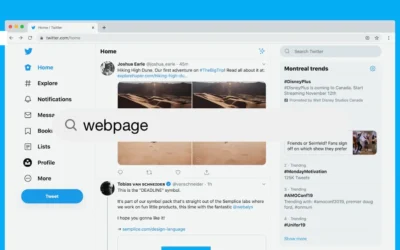In the world of web development, three languages reign supreme: HTML, CSS, and JavaScript. These languages are the building blocks of the web, allowing developers to create dynamic and interactive websites. In this article, we will explore the basics of HTML, CSS, and JavaScript, and understand how they work together to make the web come to life.
What is HTML?
HTML, or Hyper Text Markup Language, is the language used to structure the content of a web page. It provides a set of instructions that define the elements and layout of a page. Think of HTML as the blueprint for a building – it determines the structure and organization of the content. HTML uses tags to define different elements such as headings, paragraphs, links, images, and more.
When writing HTML, you start with a document type declaration (<!DOCTYPE html>) to indicate that you are using the latest version of HTML. The content of an HTML page is enclosed within the <html> tags. Inside the <html> tags, you have two main sections: the <head> and the <body>. The <head> section contains meta information about the page, such as the title, character encoding, and linked stylesheets or scripts. The <body> section contains the actual content of the page.
Here is an example of a basic HTML document structure:
<!DOCTYPE html>
<html>
<head>
<meta charset="UTF-8">
<title>My Web Page</title>
</head>
<body>
<h1>Welcome to My Web Page</h1>
<p>This is a paragraph of text.</p>
<a href="https://www.example.com">Click here</a> to visit my favorite website.
</body>
</html>
In the example above, we have an HTML document with a title of “My Web Page.” It contains a level 1 heading (<h1>) that says “Welcome to My Web Page,” a paragraph of text (<p>), and a hyperlink (<a>) to an external website.
HTML provides a wide range of tags and attributes to structure and format the content of a web page. By combining these tags and attributes, developers can create rich and meaningful web pages.
What is CSS?
CSS, or Cascading Style Sheets, is the language used to style the appearance of a web page. While HTML focuses on the structure and content, CSS focuses on the presentation and layout. With CSS, you can control the color, size, font, spacing, and positioning of elements on a web page.
CSS works by selecting HTML elements and applying styles to them. You can select elements based on their tag name, class, or ID. Once selected, you can use CSS properties to modify the appearance of the elements. CSS properties include color, font-size, margin, padding, background-color, and many more.
To apply CSS styles to an HTML document, you have several options. You can use inline styles, which are defined directly within the HTML tags using the style attribute. For example:
<h1 style="color: blue;">Hello, World!</h1>
You can also use internal stylesheets by placing CSS code within the <style> tags in the <head> section of the HTML document. For example:
<head>
<style>
h1 {
color: blue;
}
</style>
</head>
<body>
<h1>Hello, World!</h1>
</body>
Another option is to use external stylesheets by linking a separate CSS file to the HTML document using the <link> tag. This allows you to keep your CSS code separate from your HTML code, making it easier to maintain and reuse styles across multiple pages.
Here is an example of an external stylesheet file:
<head>
<link rel="stylesheet" href="styles.css">
</head>
<body>
<h1>Hello, World!</h1>
</body>
In the styles.css file, you can define the styles for the <h1> element:
h1 {
color: blue;
}
CSS provides a powerful set of tools to control the visual aspects of a web page. By combining HTML and CSS, you can create visually appealing and well-structured websites.
What is JavaScript?
JavaScript is a programming language that allows you to add interactivity and dynamic behavior to your web pages. With JavaScript, you can create interactive forms, validate user input, manipulate HTML elements, handle events, make network requests, and much more.
JavaScript works by targeting HTML elements and manipulating their properties, attributes, and content. You can select elements using various methods, such as getElementById(), querySelector(), or getElementsByClassName(). Once you have selected an element, you can modify its properties, such as innerHTML, style, or src.
Let’s take a look at an example of how JavaScript can be used to change the content of an HTML element:
<body>
<h1 id="myHeading">Hello, World!</h1>
<script>
var heading = document.getElementById('myHeading');
heading.innerHTML = 'Hello, JavaScript!';
</script>
</body>
In this example, we have an HTML document with a level 1 heading (<h1>) that has an ID of “myHeading.” The JavaScript code inside the <script> tags selects the element with the ID “myHeading” using getElementById() and changes its innerHTML property to “Hello, JavaScript!”
JavaScript also provides control structures such as if statements, for and while loops, functions, and objects, allowing you to create complex interactions and perform calculations.
To include external JavaScript files in your HTML document, you can use the <script> tag with the src attribute:
<script src="script.js"></script>
In the script.js file, you can write your JavaScript code:
var heading = document.getElementById('myHeading');
heading.innerHTML = 'Hello, JavaScript!';
JavaScript is a versatile language that can be used both on the client side (in the browser) and on the server side (with platforms like Node.js). It plays a crucial role in modern web development and enables developers to create dynamic and interactive web experiences.
Conclusion
In this article, we have explored the three main languages of the web: HTML, CSS, and JavaScript. HTML provides the structure and content of a web page, CSS adds style and layout, and JavaScript adds interactivity and dynamic behavior.
HTML, CSS, and JavaScript work together to create compelling web experiences. By mastering these languages, you can build beautiful and functional websites. Whether you are a beginner or an experienced developer, understanding the fundamentals of HTML, CSS, and JavaScript is essential for success in web development.
So take the time to learn and practice these languages, and unlock the full potential of the web. Happy coding! To view more of our blog posts, visit our website’s blog section.



